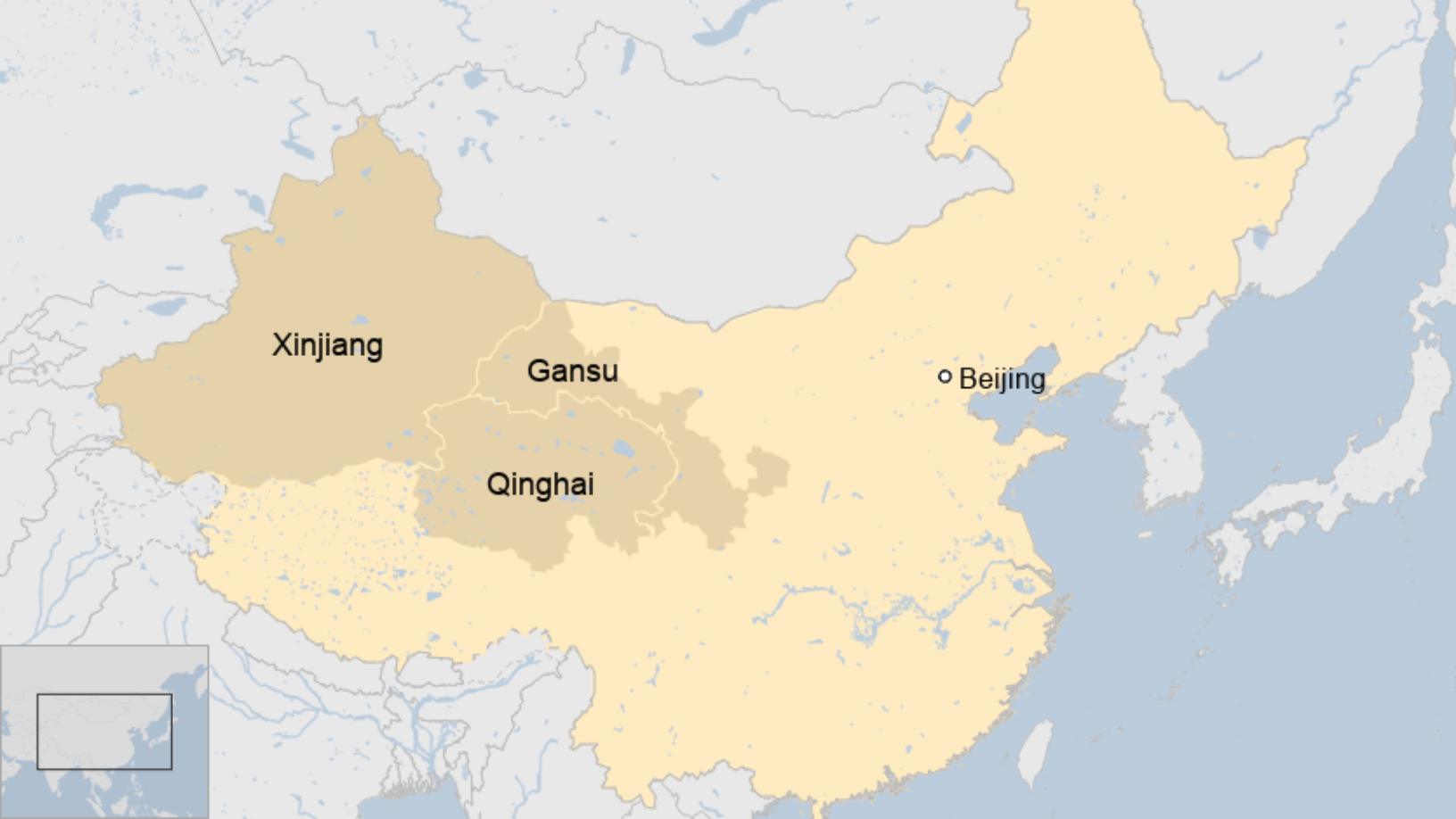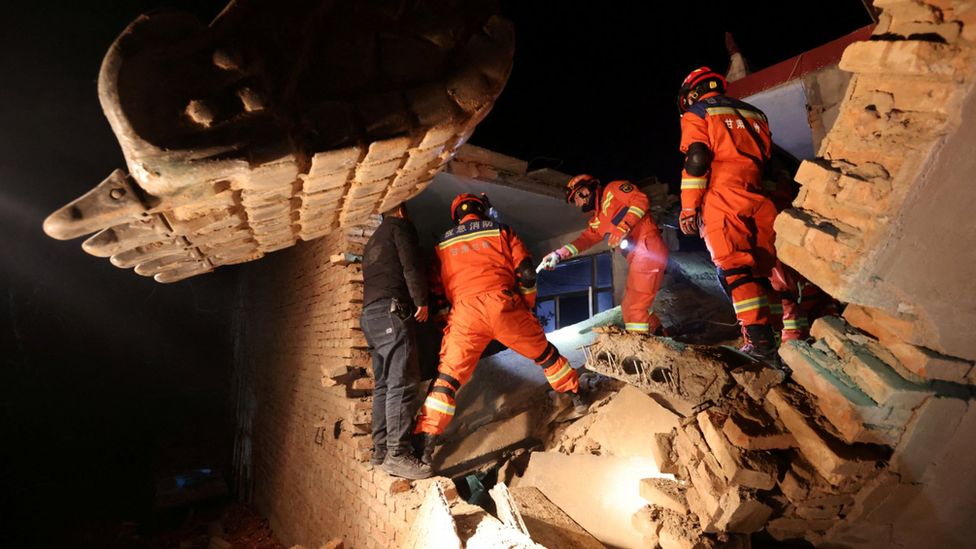By Frances Mao & Christy Cooney
At least 116 people have been killed and another 220 injured following an earthquake on Monday night in north-west China, state media report.
Chinese authorities said the 6.2 magnitude quake struck Gansu province around midnight (16:00 GMT) and also affected neighbouring Qinghai.
Thousands of rescuers are braving freezing conditions to try and help people in the high-altitude area.
A second quake struck neighbouring Xinjiang hours later on Tuesday.
The damage from that 5.5 magnitude strike was not immediately clear.
Chinese President Xi Jinping has ordered full rescue efforts to Gansu, one of China's poorest regions. Jishishan county appears to be the worst-hit area.
Gansu lies between the Tibetan and Loess plateaus and borders Mongolia. The Monday night quake struck the Linxia Hui Autonomous Prefecture, an administrative region for China's Muslim Hui people.
Chinese authorities said the quake measured 6.2 on the richter scale, while the US Geological Survey (USGS) recorded a magnitude of 5.9 and depth of 10km (six miles). About 10 aftershocks have taken place, local authorities reported.
Footage showed hospitals receiving patients, and rescuers searching through the rubble of collapsed buildings. Debris was also seen on the floors of rooms whose ceilings had partially collapsed.
The government has dispatched teams of rescue workers to assist local emergency crews.
In a statement, President Xi said, "all efforts should be made to carry out search and rescue, treat the injured in a timely manner, and minimise casualties".
On Tuesday, local authorities in Gansu's Jishishan county held a press conference where they said 105 people had been killed in Gansu and another 96 injured. Another 11 had been killed and 124 injured in Qinghai, state media agency Xinhua reported.
Local authorities urged the public not to approach the scene, to leave the roads to official rescue teams.
Power and water supplies have also been disrupted in the region, hindering some rescue efforts.
China sits in a region where a number of tectonic plates - notably the Eurasian, Indian and Pacific plates - meet, and is particularly prone to earthquakes.
Last September, more than 60 people were killed when a 6.6-magnitude quake hit the southwestern Sichuan province.
A 1920 earthquake in Gansu , which killed more than 200,000 people, is also recorded as one of the world's deadliest in the 20th century.









0 komentar:
Posting Komentar